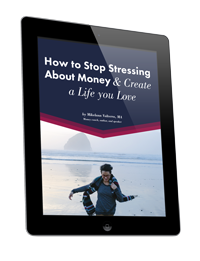In my post on understanding your brain, I shared six tips to avoid overspending when you are out shopping. But what about on-line shopping?
On-line shopping can be VERY hazardous to our wallets, and yet we often only think about its virtues. We think we won’t be tempted to buy other things that catch our eye if we are in a brick and mortar store. We love how it can save us precious time. And we can easily shop for the best deal.
However, the longer you “research” the more you spend. (This Yahoo article mentions this issue ) This is similar to brick and mortar shopping. The longer you spend shopping, the more you buy. Period.
So let me be clear: browsing on the internet can be very dangerous to your wallet. Know what you are looking for before you wander around.
Sometimes people shop on line as a form of entertainment, though often, they don’t think of it this way. You may be stressed, bored, or simply needing a break, so you hop on-line to just “look around”. And before you know it, you’ve got some cute clothes loaded up in your on-line shopping cart, with your finger poised over the “buy” button. It’s so easy.
Most of us get pleasure out of buying things we like. There is nothing wrong with this. When you buy something you enjoy, it releases dopamine- the feel good chemical. This is normally balanced against the pain of paying. And this is where on-line retailers are particularly sneaky. They want to divorce you from the pain of paying, so you can bask in those adorable shoes that they promise you can easily return.
They make it all too easy to click and buy—too easy. Between the ease of using your credit card and bookmarking your favorite shopping sites, you can spend a ton of money in mere minutes. And to help you, they’ve conveniently remembered your card information for you! Oh heck- let’s go further. Let’s just hit that “one click buy” button and you don’t have to finish thinking about irritating questions like, “Do I really need this? Will I really use this? Can I honesty afford this?”
Keep in mind that on-line retailers have been studying you and they know how to get you to spend money. They know, for example, that if a product is under twenty dollars ($19.99 anyone?) it is generally believed that people will buy based on emotion alone. Over that amount, our intellect kicks in too. So they love to offer you these great deals as you’re checking out. Ever notice? Besides, what’s another $19 bucks?
And you’d better hurry up and pay, before you have time to think too much. Have you ever had a little timer pop up? You only get this really good deal if you act within a certain time. And it’s counting down!!! It’s like Vegas, baby. Fun, fun, fun.
Even if you don’t like this, it really hurts your ability to think rationally. And we’ve all heard that it’s best to take time to think on something. Close your browser and come back in an hour. Or better yet, tomorrow. The next time you see it, it may or may not be so appealing. 24 hours later, your intellect kicks in and your dopamine doesn’t release in quite the same way if it’s the second time you’ve seen something. It’s not as exciting. The shiny novelty of the shoes aren’t so shiny. BUT there is that timer counting down. Pure Evil.
So here are five tips to help you:
1. NEVER set up one click buying. This is the most brilliant thing Amazon ever did. They make a ton of money from this feature. With one click, you’re done. It’s better to slow yourself down, by having to enter your payment information. Otherwise, you will overspend. Don’t reward them for their evil genius. (Redbook Magazine says to use this extra time when you are entering your payment information to do a gut check “Is it really worth it?)
2. Do not give your email out to internet advertisers, so you can limit all the “free stuff and goodies” that come into your in-box, inviting you to come and wander around the internet.
3. Do not bookmark your favorite shopping sites. Again, do things to slow you down a bit and make you mindful. Just because something is possible in the electronic era, doesn’t mean you should do it.
4. Resist the urge to buy the special “add-on” product that internet advertisers offer you right before you finish paying. You know what I’m talking about. “If you like this, you’ll love this!” If you didn’t need or want it before, let it go. Don’t buy something just because it’s on “sale” or you see it at the “check-out counter”. To help with this, periodically delete the cookies in your browser’s preferences- retailers use this to track your personal data.
5. Little timer be damned. Wait 24 hours before making any large purchase. Remember, in the space between thought and action resides judgment. Give yourself some space to consciously think.
